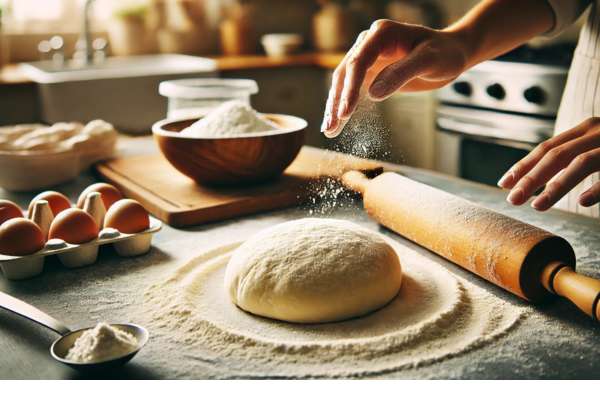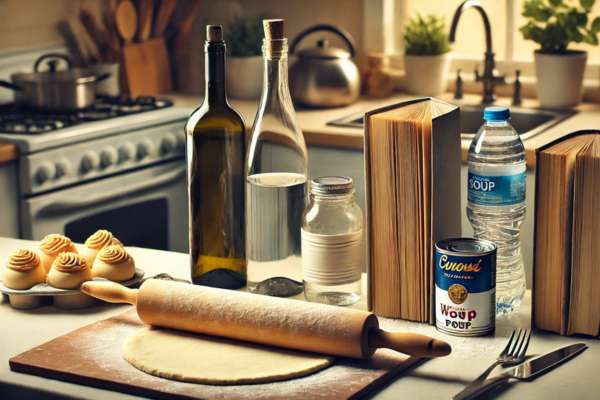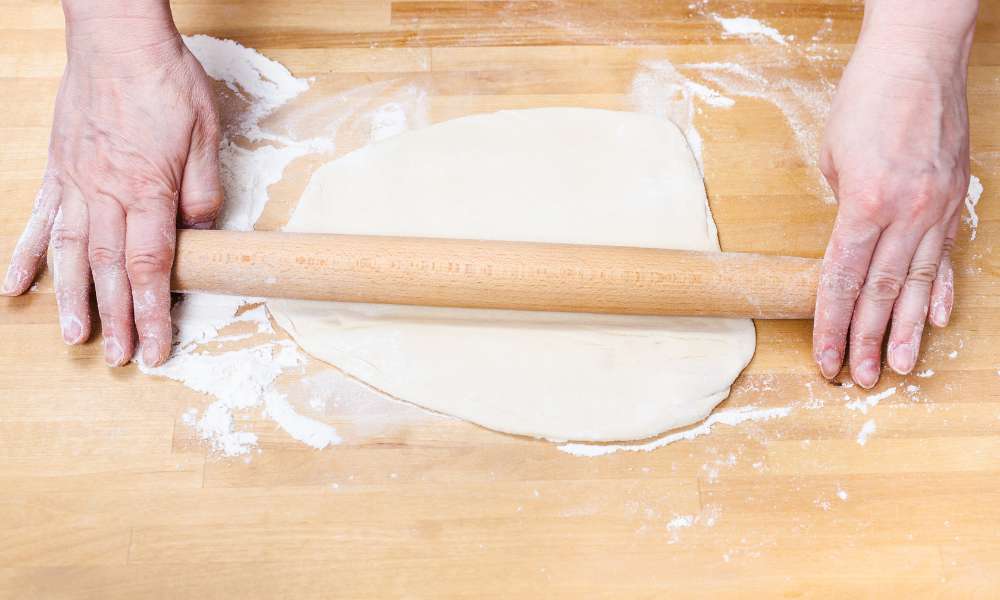Rolling dough is an essential step in countless recipes, from homemade pizzas to flaky pie crusts. Traditionally, a rolling pin is the go-to tool for this task, providing the necessary weight and shape to achieve a smooth, even texture. But what happens when you find yourself without one? Whether you’re in an unfamiliar kitchen, missing some equipment, or simply improvising, knowing how to roll dough without a rolling pin is a useful and creative skill. Thankfully, there are several household items that can substitute perfectly, making the process easy and stress-free. In this guide, we’ll explore various simple alternatives and techniques that will help you master rolling dough, even without a rolling pin.
1. Understanding the Importance of Rolling Dough
The process of rolling dough is fundamental in numerous recipes, from pies and cookies to flatbreads and pizzas. Rolling the pastry serves two purposes: it flattens the dough to the desired thickness, and it also helps to shape the pastry evenly. Even thickness is critical; it ensures that your pastry cooks uniformly, creating a pleasing texture throughout. Additionally, a consistent rotary can help to expel any air pockets that may have formed during the kneading process, promoting a flawless finish. Mastering the art of rolling pastry is, therefore, an essential skill for anyone looking to elevate their baking.
2. Common Scenarios When You Don’t Have a Rolling Pin
Imagine you’re traveling and suddenly have the urge to bake, or you’re at a friend’s place with a spontaneous desire to make cookies. There are moments when you find yourself without a rolling pin, and being equipped with alternatives can be a life-saver. Knowing these substitutes adds flexibility to your baking, enabling you to adapt to the tools at hand rather than halting your plans. In such situations, understanding how to improvise brings a spontaneity and resilience to the kitchen that every creative cook should embrace.
3. Essential Preparations Before Rolling Dough

Flour the Surface
Start by sprinkling a generous amount of flour on your work surface to prevent the dough from sticking. Pastry with too much adherence to the surface may tear, or it could lead to uneven thickness. Flour acts as a barrier, providing a smooth, frictionless base that keeps the pastry intact as you roll it.
Chill the Dough (If Needed)
Some doughs—especially those for pastries—benefit from a brief chilling before rolling. Chilled pastry is firmer, making it easier to handle, particularly with makeshift tools. By reducing stickiness, chilled pastry allows for smoother rolling and a finer, more consistent texture.
Choose a Suitable Work Surface
Select a flat, stable surface like a countertop or a large cutting board. Ensure it’s thoroughly cleaned and well-floured to prevent any issues during rolling. Wooden surfaces are excellent for rolling due to their slight texture, which can aid in gripping the dough.
4. Household Items That Can Substitute a Rolling Pin

Wine Bottle or Drinking Glass
One of the most versatile rolling pin alternatives is a wine bottle. It has a similar cylindrical shape, allowing you to apply even pressure on the dough. Clean the bottle, remove any labels, and fill it with water for extra weight. Similarly, a tall, smooth glass can work well. It may lack the length of a rotary pin, but with care, it can still flatten smaller portions effectively.
Cans (Soup or Canned Vegetables)
A sturdy can of soup or vegetables can serve as a quick rolling pin substitute. Choose a can with smooth sides to avoid imprints on your dough. Wash it thoroughly and dry it well, ensuring no residue is left that might stick to your pastry. It’s especially useful for smaller pastry portions and requires minimal effort to press down and roll.
Water Bottle
An empty or filled water bottle can do the trick. For added weight, fill it with water or ice. Ensure the cap is tightly secured to prevent any leaks. A filled water bottle can also have a cooling effect on certain dough types, like pastry pastry, which can benefit from the chill while being rolled.
A Book Covered with Plastic Wrap
When pressed for alternatives, even a book can work. Wrap it in plastic wrap to keep it sanitary, then gently press the pastry, focusing on even thickness. It’s best for pressing rather than rolling, so use this method for doughs that can tolerate a bit of hand-flattening.
5. Step-by-Step Guide: Rolling Dough with Substitute Tools

1. Start by flouring both your work surface and the tool you’re using to prevent the dough from sticking.
2. Place the dough in the center of your floured area and gently flatten it with your hands, creating an initial base to roll from.
3. Using your chosen tool, apply even pressure across the dough. Rotate the pastry periodically, ensuring it maintains a circular shape and reaches the desired thickness. Work carefully to avoid tearing.
6. Tips for Getting the Best Results with Alternative Tools
Apply Consistent Pressure
Even pressure is crucial. Avoid pushing too hard on one side, as it can lead to uneven pastry thickness. Smooth, gradual pressure helps in achieving the best results, particularly when working with delicate doughs.
Rotate the Dough Frequently
By rotating the dough frequently, you maintain a more uniform thickness, which is especially important if your substitute tool isn’t as long as a rolling pin. Rotating also helps prevent sticking.
Re-flour as Needed
Throughout the process, you may find the dough beginning to stick. Lift it gently, sprinkle some flour on the surface and tool, and continue rolling. This simple step will make your task easier and prevent potential mishaps.
7. Common Mistakes to Avoid
Uneven Pressure
Uneven pressure can result in sections of the pastry that are too thick or too thin. This unevenness can cause problems in baking, from irregular cooking times to textural inconsistencies.
Over-Flouring
Too much flour may alter the texture of your dough, particularly in delicate pastries. A light dusting is usually all that’s needed, so avoid overdoing it to maintain the pastry’s intended consistency.
Using Objects with Ridges
Tools with ridges or sharp edges can leave unwanted imprints. Opt for smooth, cylindrical items to achieve a professional, finished look with minimal disruption to the dough’s surface.
Conclusion
While a rolling pin may be the preferred tool for pastry, there’s a certain ingenuity in being able to improvise. Household items, from wine bottles to water bottles, provide resourceful solutions that don’t compromise on results. Embrace the adaptability and spontaneity of these methods, and you may find that not having a rotary pin is hardly a setback. Explore, experiment, and enjoy the art of baking with the tools at hand.
